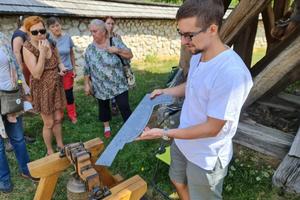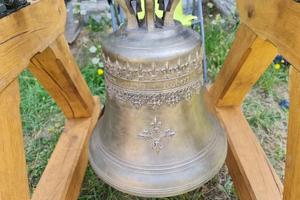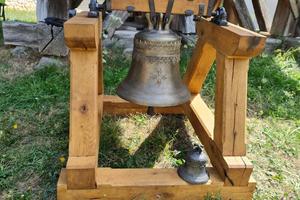After three years, Róbert Slíž, from Krásnohorská Dlha Lúka near Rožňava, finally finished casting his first bell. Self-taught, he was undeterred at the length of time it had taken him, and he forged on doing what he loved.
Now, aged 24, he has cast more than 120 bells and is one of a handful of people in Slovakia making a living as a bellmaker.
A helping hand in the heart of Europe offers for you Slovakia travel guide.
Slíž casts bells using traditional medieval technology - a technique he says makes it possible to produce higher-quality and more durable bells than with modern technology. he admits, though, that it is slower and more labour-intensive.
He was interested in bells as a child
"Even as a little boy, I was fascinated by bells, their sound. I wondered what was actually in those church towers. When I was 12 years old, I started visiting them. Sometimes I was able to see them as a tourist, in other cases my visit had to be 'phoned in,'" Slíž said.
Soon after, he began doing bell-ringing at various celebrations and other occasions.
"At the age of 15, I wanted to make something of my own for the first time. That's when I started trying to cast a bell. I finally managed to cast my first, at 18, after three years of trying. Since then, I have cast more than 120 bells, weighing from one kilogram to 430 kilograms," he explained.
Self-taught, at the start all he knew about bells he got from books and other documents.
Eventually he came across some documentaries from workshops where the principles of how a bell mold is made were explained.
"The problem, however, is the clay from which the bell form is made is different everywhere. Just walk a kilometre further and it will already have a different composition and properties. What worked for other bellmakers did not work for me, and vice versa," said Slíž.
Then there years ago, he began studying with an experienced master bell maker in Spain.
"I worked with him on larger bells, including a one-ton bell. But then Covid-19 came and I had to return home. But since then I've been making bigger bells as well," he said.
His largest bell so far - part of a large carillon project consisting of 52 bells with a total weight of 2.5 tons - is due to soon be taken to Switzerland.
"There is a whole range of bells in it, from 1.5 kg to 430 kg. It will be a great concert musical instrument," he said.
"I cast bells to be used in Slovakia, Hungary, Germany, and even for the crypt of Napoleon III. in England. That's probably the bell that went farthest," he added.
Spectacular Slovakia travel guides
A helping hand in the heart of Europe thanks to the Slovakia travel guide with more than 1,000 photos and hundreds of tourist spots.
A detailed travel guide to the Tatras introduces you to the whole region around the Tatra mountains, including attractions on the Polish side.
Lost in Bratislava? Impossible with our City Guide!
Selected travel articles, podcasts, travellers' needs as well as other guides dedicated to Nitra, Trenčín Region, Trnava Region and Žilina Region.



 Róbert Slíž casts bells using traditional medieval technology. (source: Branislav Caban)
Róbert Slíž casts bells using traditional medieval technology. (source: Branislav Caban)


